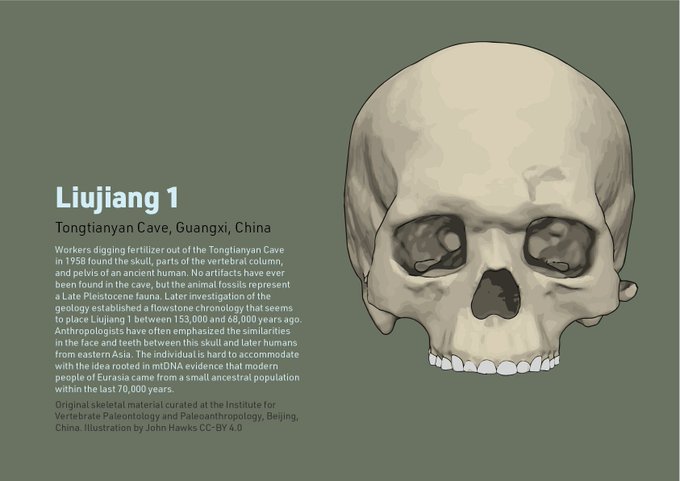One of the branches of the #hominin tree can be traced today as far as 4.1 million years ago, at Kanapoi, Kenya. Here, the track becomes unclear. What was the origin of the Australopithecus line, and how does it connect to fossils like Ardipithecus? #paleoanthropology
For more than 100 years, the remains of a Neandertal child lay unrecognized in Belgium after being unearthed in 1829. Much of the child's context was lost in excavation, but today Engis 2 is crucial evidence about growth and development in #paleoanthropology #hominin
When I turned to #paleoanthropology, I knew that teeth made up a disproportionate amount of the record, but I couldn't imagine I would ever be very interested. What fascinates me now are the clues they give about an individual #hominin's life course.
Paranthropus aethiopicus is one of the fossil #hominin species that may be a "nomen dubium". The holotype specimen is Omo 18-18, a jaw that lacks any tooth crowns. What remains isn't distinct from large samples of P. boisei or P. robustus. #paleoanthropology
Quite a lot of evidence now suggests ancient people usually classified as "modern" humans were in China before 68,000 years ago. None are as telling as the Liujiang individual, which shows anatomical similarities with more recent people of the area. #paleoanthropology #hominin
The perils of understanding extinct populations with morphology are front and center with the Arago #hominin sample. Were they early Neandertals, or something else? My guess is a mosaic of drift in ancient Eurasian populations. #paleoanthropology
Some parts of the skeleton are very rare in the #hominin fossil record. The hand remains of Homo naledi, including this articulated specimen, tell us much about the tool-using potential of this species, while suggesting it was a great climber. #paleoanthropology
A 900,000-year-old fossil fragment from Kenya stuck out as too small and too late for African H. erectus. A new study suggests it looks most like earlier Dmanisi H. erectus and #Homonaledi. Could this be a H. naledi ancestor? https://t.co/NRC91eYTBu
Some fossil #hominin skulls have an important place in understanding the variation of extinct species. Stw 505 is a large Australopithecus africanus skull, helping to show that big individuals had brains that overlapped in size with the larger-brained Homo. #paleoanthropology
Students of #hominin evolution quickly pick up the differences between big-toothed Paranthropus boisei and our genus, Homo. Yet there are still anatomical overlaps between these lineages that make some of the fossils from Koobi Fora challenging to interpret. #paleoanthropology











